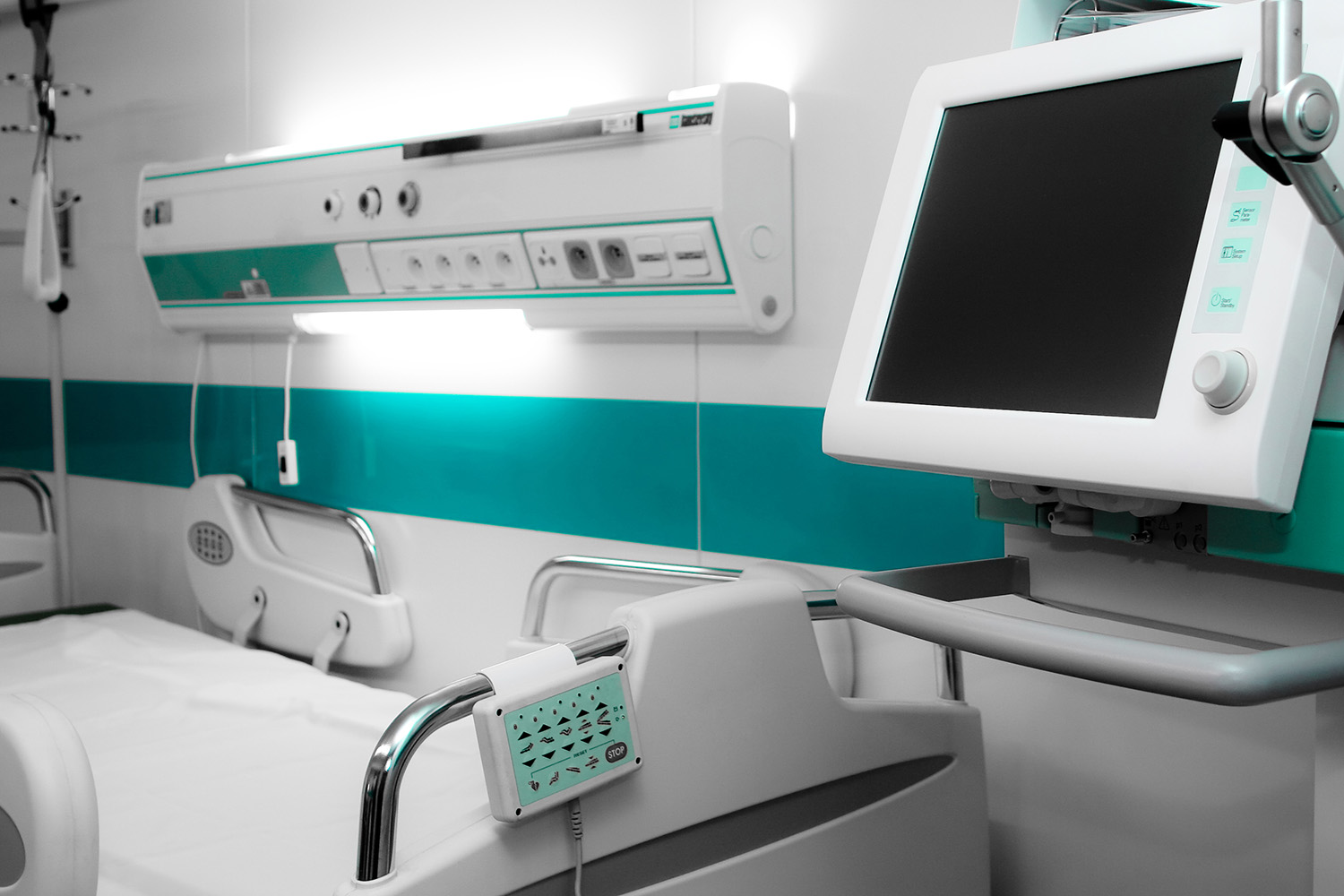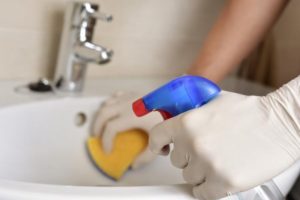
06 Jan Cleaning Patient Care Equipment
How Should I Clean This?
Take your pick of any type of patient care equipment in the inpatient or outpatient setting, and I have probably been asked about cleaning it. Let’s quickly review some basics.
Always use an Environmental Protection Agency (EPA) registered hospital grade disinfectant, which helps to substantiate the label claims. The EPA website contains lists of registered hospital grade disinfectants based on organisms of interest. For example, List B contains products that are effective tuberculocidal, which means the disinfectants on the list are effective against Mycobacterium tuberculosis. If you are interested in finding the disinfectant already used at your facility, use the entire EPA registration number (rather than the product name) to locate the disinfectant on the EPA website.
Many healthcare facilities (including medical and dental offices) use disinfectant wipes to clean equipment. If a piece of equipment is given a quick swipe, is that sufficient to ensure any organic material has been removed and the disinfectant is killing microorganisms consistent with the label claim? To be effective, all organic material must be removed for the disinfectant to work, as stated on the label.
The first thing to check is whether the disinfectant wipe is a combination cleaner and disinfectant or only a disinfectant. This information should be contained on the label or in the product literature. For example, one manufacturer’s website states the disinfectant wipe is an “all-in-one cleaner and disinfectant.”
Additional product literature clearly directs the consumer to use one wipe to clean the surface and to obtain a second wipe to disinfect. Disinfectants, whether in a wipe or in liquid form, should only be used according to the label directions. Directions that state “clean the soiled area then use the disinfectant wipe” aren’t very helpful in this sense. One potential solution to this dilemma is to contact the manufacturer to determine if the product is a combination of cleaner/disinfectant if the product literature isn’t clear. Dental healthcare workers are taught to use the spray-wipe-spray or wipe-discard-wipe method to account for the need for the two-step process of cleaning then disinfecting.
Another concern is the amount of time the surface must remain wet for the disinfectant to be work as promised. You may be more familiar with the phrase “contact time” rather than the previous long-winded sentence! For the disinfectant wipe or liquid to work as indicated on the label, the surface or item being disinfected must remain wet for the length of time stated on the label. So, if the label states it kills organisms in 3 minutes, this means the disinfectant must remain wet on the item it is supposed to disinfect for 3 minutes. Sometimes, depending on the alcohol content of the disinfectant and/or the air currents, the disinfectant must be reapplied to achieve the required contact time.
Methods for Different Types of Devices
Now that some of the general properties of the disinfectant have been figured out let’s turn our attention to the medical or dental devices that are used on patients and, therefore, are disinfected between use.
If the patient care equipment is only used on intact skin, then a low level or intermediate level disinfectant such as a disinfectant wipe would be suitable. An intermediate-level healthcare disinfectant contains a label claim for tuberculocidal activity. If the disinfectant doesn’t contain this claim, then it is considered a low-level disinfectant. The Centers for Disease Control and Prevention (CDC) recommends using an EPA-registered tuberculocidal disinfectant in most healthcare situations.
As always, consult the patient care equipment or medical device manufacturer’s instructions before choosing a disinfectant. Some manufacturer’s literature will name specific products that can be used to disinfect their equipment, while others will provide the types of disinfectant with or without alcohol percentages. If the manufacturer’s instructions or owners’ manual doesn’t contain this information, contact the medical device manufacturer’s technical department for additional information.
The most common types of disinfectants used in healthcare today include hydrogen peroxide, quaternary ammonium, bleach (sodium hypochlorite), and phenolics. Many disinfectants contain alcohol to potentiate the action of the basic chemical formulation. However, alcohol is known to break down plastic over time. This is another reason to read the manufacturer’s recommendations to determine approved disinfectants for patient care equipment.
Lastly, ensure there is clear guidance as to who is supposed to clean what. Sometimes, in healthcare, there is an assumption that Environmental Services will clean the IV pump, dental laser, or some other equipment. However, Environmental Services thinks that the care team will clean that equipment.
Unclear guidance leads to confusion as to who is responsible for cleaning and disinfecting certain pieces of equipment with the end result of putting patients at risk for acquiring a healthcare-associated infection (HAI). To avoid this risk to patient safety, look at every piece of equipment used in your healthcare facility with the manufacturer’s instructions in hand, and determine ahead of time, in cooperation with Environmental Services, who will clean and disinfect what. One of the best approaches is to look at cleaning instructions prior to purchasing any equipment to determine if the instructions are feasible in your facility.
For example, a blood pressure cuff manufacturer’s instructions direct the end-user to wash the cuff in detergent, let it dry, and soak it in a glutaraldehyde solution between patients. This simply isn’t feasible in today’s fast-paced healthcare setting!
Collaboration, researching disinfectant products compatible with the equipment to be cleaned and disinfected, and clear guidance are some of the basic requirements to ensure patient care equipment is thoroughly and properly cleaned between uses. These actions will help to reduce the risk of patients acquiring an HAI during their healthcare experience.
This blog briefly discussed choosing a disinfectant appropriate to the item, following manufacturer’s instructions, collaborating with other departments as needed, and ensuring there is a clear delineation of who is responsible for cleaning which pieces of equipment.
Why Cleaning Patient Care Equipment Is Important
At this point, you may be wondering why we dedicated two blogs to patient care equipment. Does patient care equipment pose a risk to patients? Is there an actual risk, or is the risk theoretical? Or worse, is all the hubbub surrounding patient care equipment simply a scare tactic that places an unnecessary burden on staff? Has patient care equipment been associated with an outbreak or, at least, to the transmission of organisms?
To answer these questions, let’s look at the role of equipment in microorganism transmission and outbreaks in the literature. One study examined shedding of methicillin-resistant Staphylococcus aureus (MRSA) from colonized patients during medical procedures and found that 32% of the surfaces touched by staff and 25% of portable equipment (e.g., vital signs equipment, bladder scanners) were contaminated with harmful organisms.
Which Equipment Is a Cause for Concern?
Additionally, shared medical equipment has been implicated in several outbreaks as a source of transmission of pathogens. Kanamori, Rutala, and Weber and conducted a literature review comparing outbreaks related to patient care equipment over from 1987 to 2016. The authors found that the types of equipment responsible for outbreaks haven’t changed over time, and additional healthcare equipment has been implicated. Based on the literature review, the researchers classified various equipment according to the risk of outbreaks and healthcare-associated infections. They classified humidifiers, nebulizers, suction apparatus, ultrasound probes, and thermometers as high risk since these pieces of equipment were responsible for multiple outbreaks. Pressure transducers and stethoscopes were considered to have a moderate risk of being the source of outbreaks.
Breast pumps, computer keyboards, mobile phones, and tablets, electrocardiography (EKG)/ lead wire, enteral feeding, medical charts, tourniquets, wheelchairs, and toys were all listed by the authors as a low risk since these items were involved in fewer published outbreaks. Interestingly, an outbreak of Acinetobacter baumannii was traced to a temperature probe of a humidifier even though the probe had been disinfected with 70% ethanol per the manufacturer’s recommendations.
This observation underlines the importance of collaboration between disciplines and including the Infection Preventionist when reviewing cleaning and disinfection instructions. A recent study, which quantified the interactions between hospitalized patients and equipment, found that a large percentage of portable equipment was contaminated with MRSA, vancomycin-resistant Enterococcus (VRE), and/or Clostridioides difficile (C. diff). About 42% of the equipment came into direct contact with patients on medical-surgical or intensive care units. The remaining equipment was only touched by healthcare personnel.
Where Is This Equipment Located?

Although the cited studies occurred in hospitals, much of the same equipment can be found in ambulatory settings and deserves the same attention to detail. Outpatient settings (e.g., medical and dental offices/clinics, ambulatory surgery centers) have the disadvantage of potentially not knowing the patient’s history of infection or immunosuppressed status. Additionally, patients may not return to the same ambulatory setting for infection treatment. Even if the patient returns to the same medical or dental clinic for treatment, it is highly unlikely a piece of medical equipment as the source of infection would enter any provider’s or staff member’s mind.
Lastly, ambulatory settings have the disadvantage of spotty or inconsistent infection surveillance; so, an outbreak may go unnoticed unless the lab processing the cultures (if cultures are performed) notices an unusual organism and informs the facility.
How to Ensure Clean Patient Care Equipment
What is the best way to ensure patient care equipment is cleaned and disinfected properly?
- Make a list of all disinfectants or disinfectant wipes in the facility and compare those to the equipment manufacturer’s recommended product(s). If the disinfectants in use at your facility are different from those recommended in the owner’s manual:
– Contact the equipment manufacturer to obtain more current information. You can also ask if disinfectant A can be used on the equipment.
– If an unsatisfactory response is obtained from the equipment manufacturer, contact the disinfectant manufacturer to determine if they have performed studies showing the effectiveness of their product on the equipment in question. - Develop policies for cleaning the equipment based on equipment and disinfectant manufacturers’ recommendations and indicate the responsible party for each piece of equipment.
- Educate those responsible for cleaning the equipment, using the policy.
- Conduct observations of equipment cleaning to ensure the practice matches policy.
- Provide immediate feedback if a violation is noticed and work with staff to determine any obstacles to performing the process, as indicated in the policy.
Some additional ideas to determine if the equipment is properly cleaned, according to the literature, includes using a fluorescent marking gel that can only be seen using a blacklight or adenosine triphosphate (ATP) monitoring system. The marking gel is the least expensive and doesn’t require much training to use. When using either the gel or an ATP system, predetermine the most likely areas to be contaminated on the equipment you intend to monitor and periodically change the area that is marked to prevent a focus only on the marked areas.
Reid et al. cultured patient-ready equipment (e.g., wheelchairs, vital signs machines, EKG machines, mobile dialysis, IV poles with pumps) before and after exposure to an ultraviolet disinfection pod and found a 93.4% reduction in colony-forming units (CFUs) after a 5-minute cycle. Although this is only one study, it parallels the literature related to environmental cleaning, which indicates that a greater reduction of organisms is seen when ‘no-touch’ technology is applied after routine cleaning. Since staff is pressed for time in all settings, this may be a reasonable disinfection method. However, using UVDP technology won’t negate the need to routinely clean equipment prior to disinfection.
A Final Word
Try to avoid having numerous disinfectants for staff use since the ‘special’ disinfectant that was purchased for one type of equipment (e.g., vital signs machine, IV pump, glucometer) will invariably end up in widespread use – whether it is appropriate or not!
The best solution is to ensure to involve the Infection Preventionist, end-users, and whoever will be responsible for cleaning and disinfecting equipment when evaluating or considering purchasing a new piece of equipment. This simple collaboration will help to avoid multiple issues when equipment is used for patient care.


